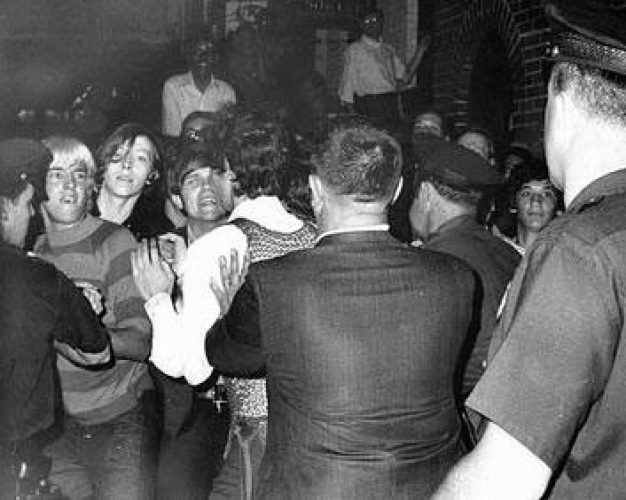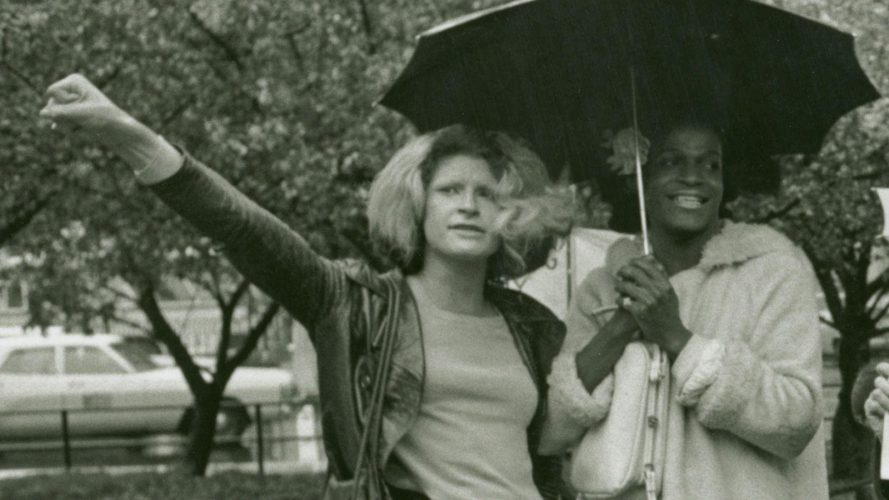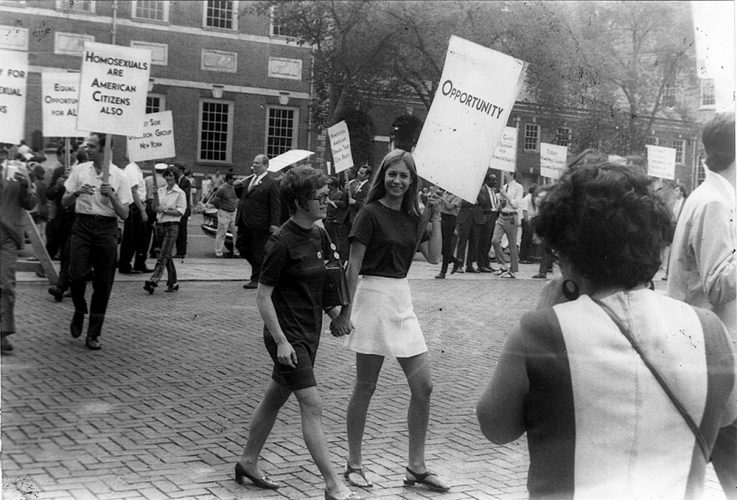The fight for gay rights intensified in the early hours of June 28, 1969, when New York City police raided Greenwich Village’s Stonewall Inn. They’d done it before. But this time, the gender-variant patrons and street youth fought back. Fists, bottles, and beer cans flew. The riot lasted six nights.
The last Annual Reminder at Independence Hall was held in Philadelphia on July 4, 1969. A few weeks later, at the Eastern Regional Conference of Homophile Organizations (ECHO) meeting in Philadelphia, organizers resolved to shift the focus of their activism to New York City. On June 28, 1970, the first Christopher Street Liberation Day in New York marked the one-year anniversary of Stonewall. Thousands of people attended.


